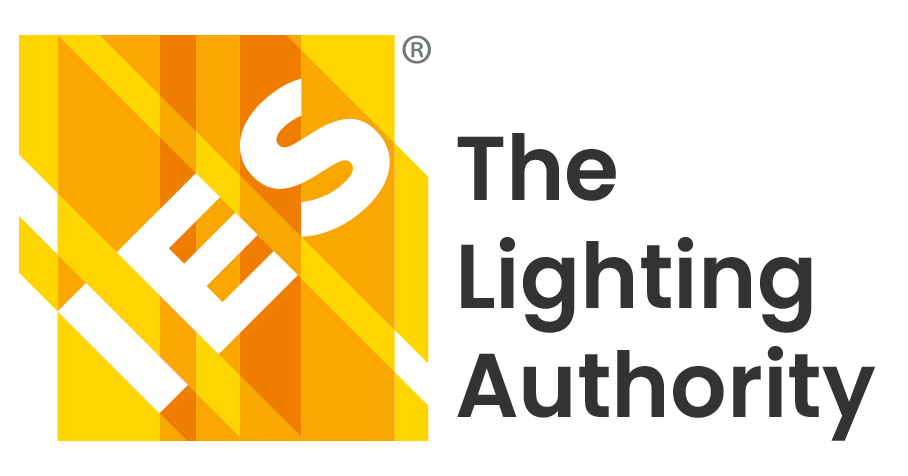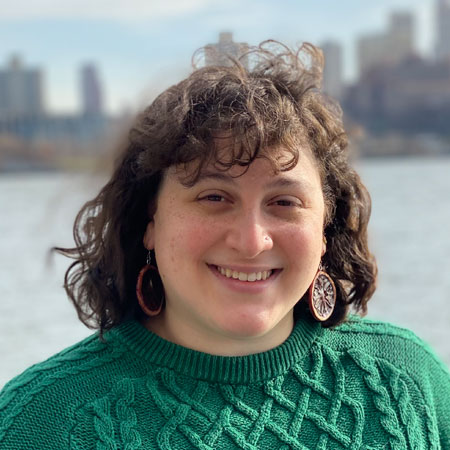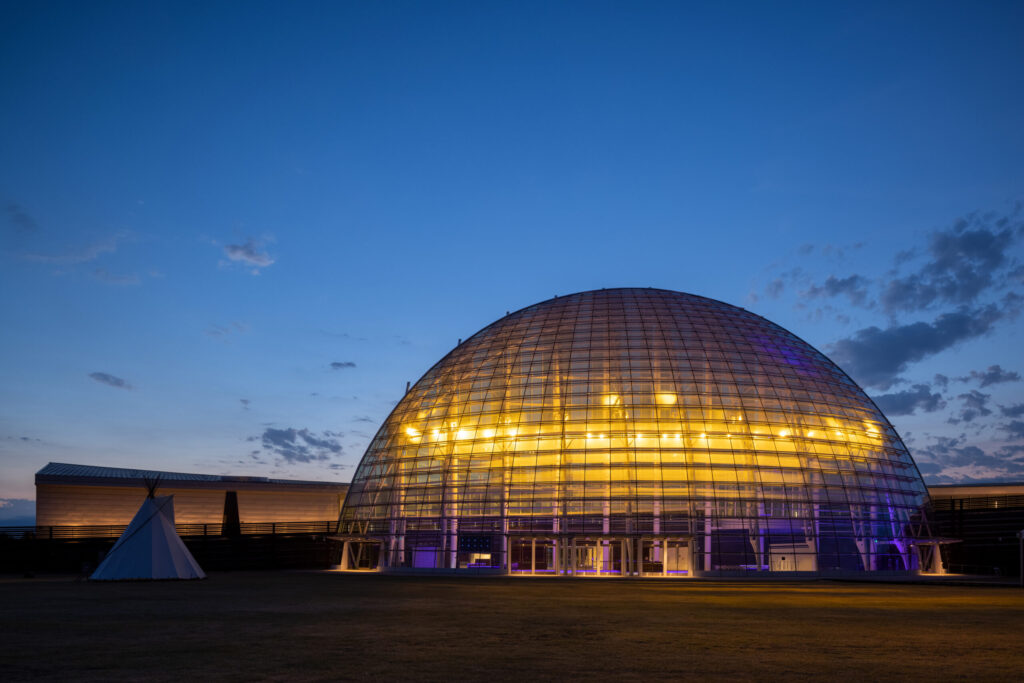More than 10 years in the making, the First Americans Museum celebrates the culture of Oklahoma’s Native ancestors
“It took over a decade to make it real, but it was worth the wait,” says Chip Israel, co-CEO and founder of Lighting Design Alliance (LDA), about the First Americans Museum (FAM) in Oklahoma City. Located on the south bank of the Oklahoma River, FAM is an homage to the culture of the Native Oklahoma people, aiming to educate the public about the diversity, history, contributions and continued resilience of the First Nations. The 175,000-sq ft building on the 40-acre site in the midst of the Oklahoma Plains hosts a symbolic glass atrium, galleries with rotating and permanent exhibits, a center for children’s education, a theater and more. Designed in collaboration by Johnson Fain Architecture, LDA and David Weiner Design, New York, the project was created with input from the state’s 39 tribes and the American Indian Cultural Center Foundation.
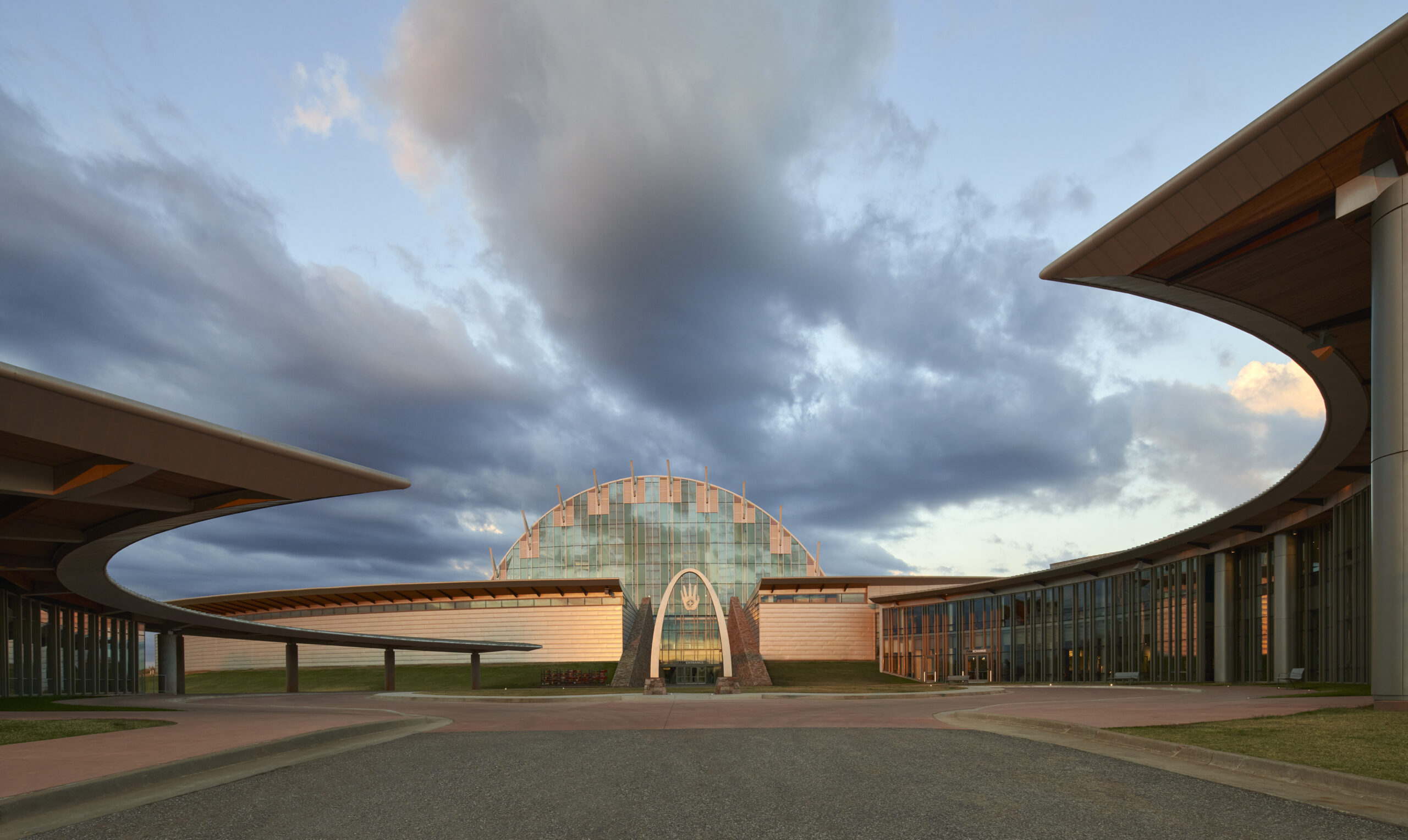
LDA’s project scope included the site, façades and the majority of the interior spaces, while David Weiner’s focus was on specialty gallery spaces. “LDA started work on the project in 2004, but the project went on hold to secure the needed funding to complete the design and to cover the construction costs. Johnson Fain then came back in 2018 to redesign to a modified building program and to meet the latest codes,” says Israel. Now that FAM is open, it is host to daily talk-tours, bi-annual solstice celebrations, various children’s summer camps and the “Potato Dance World Championship”—to name just a few of the museum’s activities.
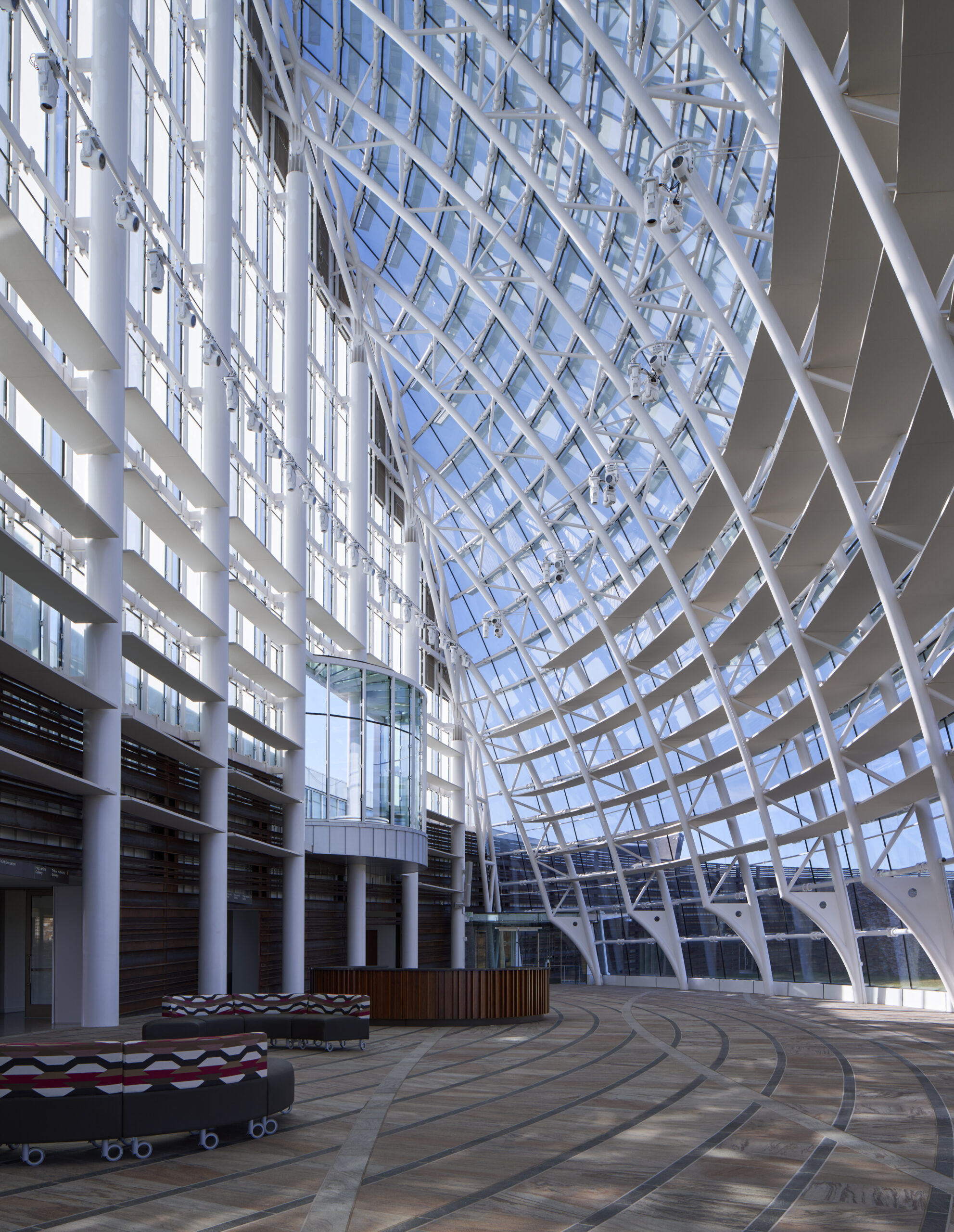
Visitors to the museum are greeted with a dramatic entrance, as well as a clear view of the glass atrium. Indirectly lit stone Remembrance Walls direct guests inward—without poles or bollards—toward a thematic archway illuminated with 2700K ingrade uplights. Then, the prismatic halfdome Hall of the People “rises” from the Plains, recalling images of the rising sun and moon. At night, integrated RGBA fixtures aimed up and down wash the structure in yellow to represent wheat, moon blue or other nature-inspired colors. During the day, “the photocell-activated scene turns off interior lighting in the atrium when adequate daylight is present,” says Alex Stepniewski, lighting designer with LDA. “Fixtures, hardware and connectors are all coordinated to visually match the structure,” which aids in making the museum’s visually dynamic scenes come to life. Finally, lights within cortensteel detailing along the curved walkway and trellis circulate the exterior of the project and provide a consistent background of vertical illumination.
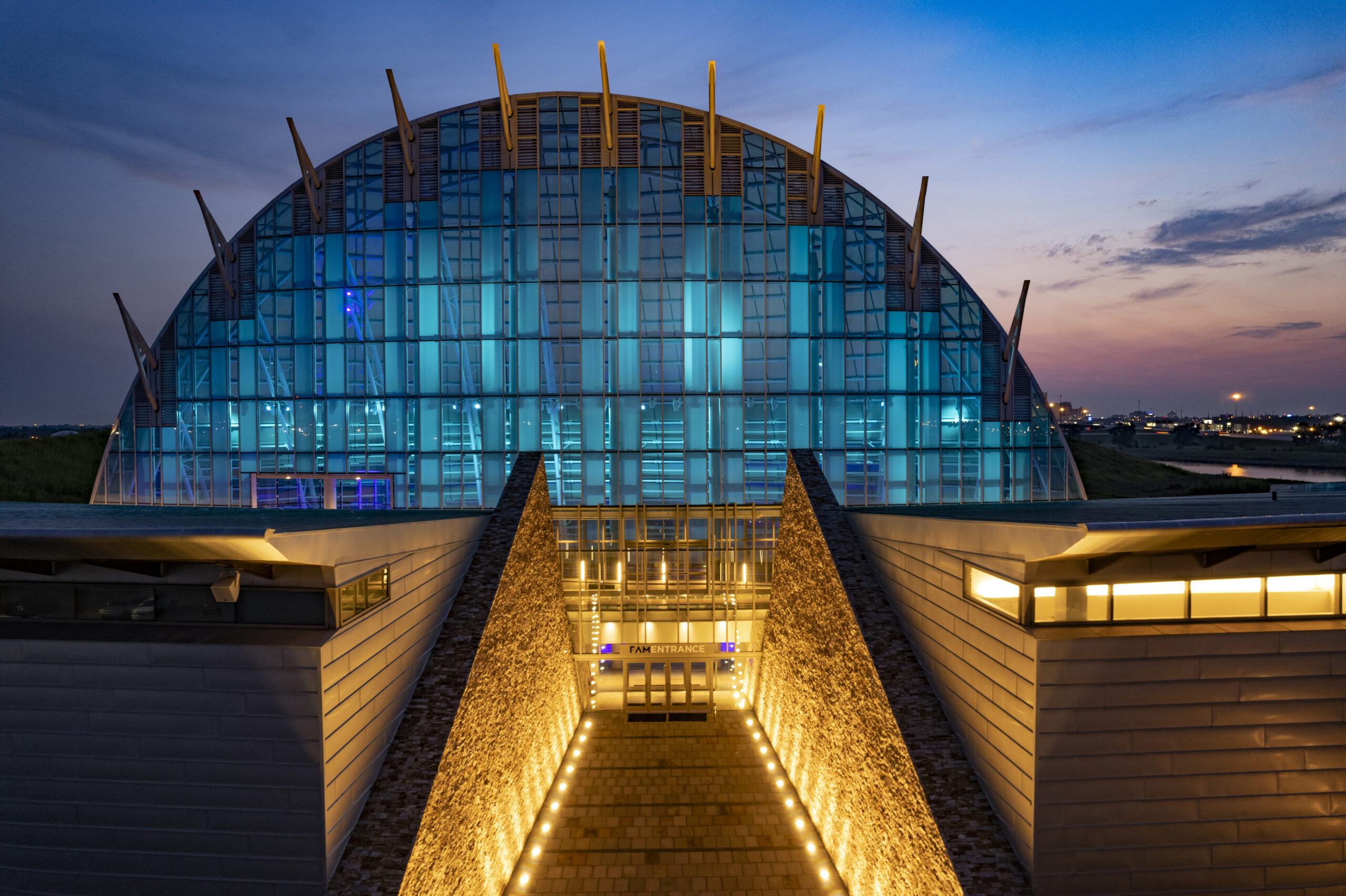
Though the striking visuals of the entry colonnade are complex, they were not the only exterior lighting factor the team had to consider—nor were they the most challenging. FAM’s mission is about respecting the truthful history of Native ancestors as much as it is about respecting the natural beauty of Oklahoma and its broader environment. The designers treated the project as if it was in a Dark-Sky Zone and as an ML01 project, “so exterior lighting needed to be carefully selected as to conserve the night sky,” says Stepniewski. Full cut-off optics were implemented to evenly illuminate the parking lot; lights were intentionally kept at a lower illuminance level and designed to target an average of 0.2 footcandles and a maximum of 0.5 fc. Nearby walking paths were left in darkness to allow guests to star gaze as they make their way to nighttime events at the museum.
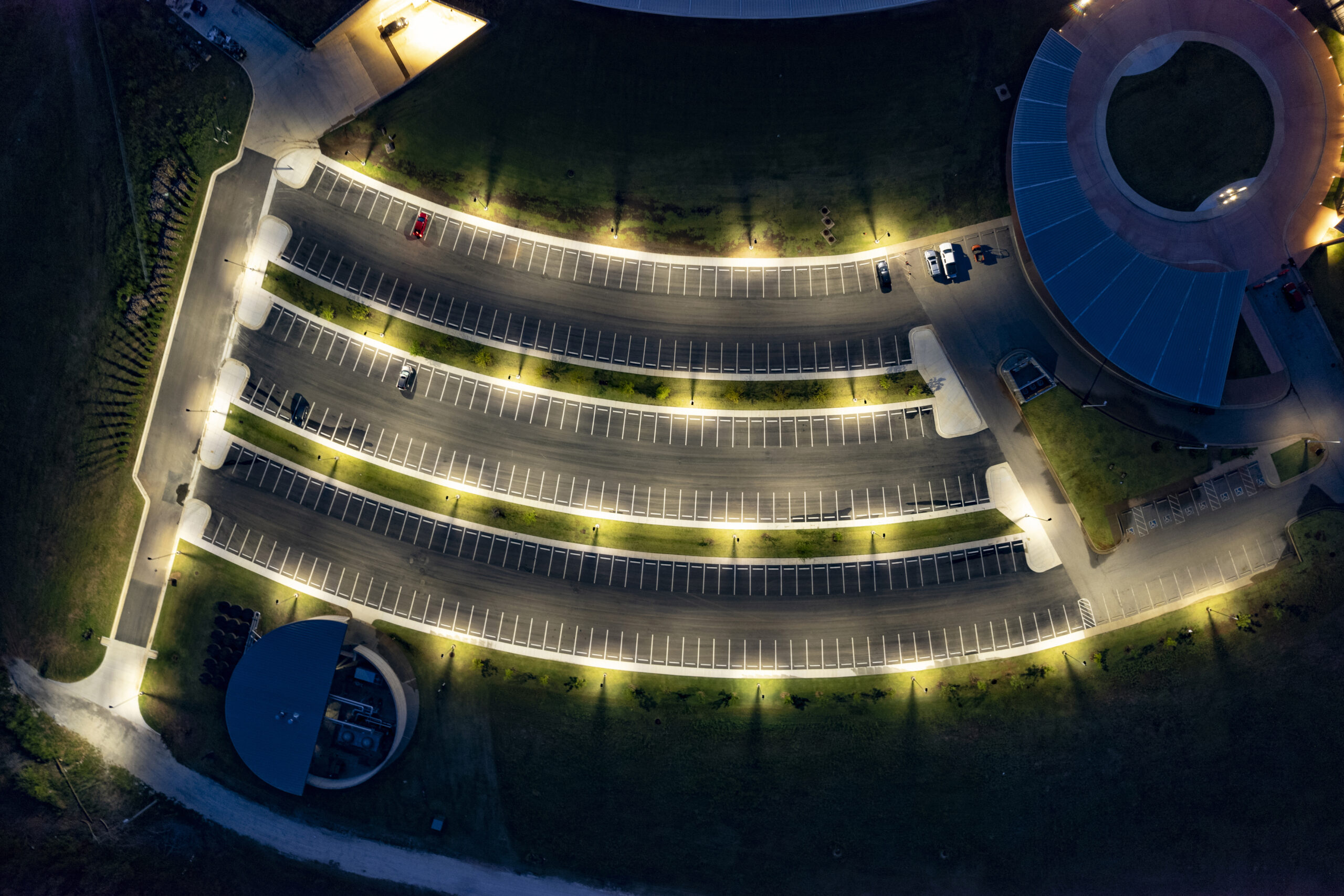
Once inside, guests can enjoy learning about multiple cultures through artifacts, sculptures, objects and more on display, as well as through interactive and breakout areas. LDA collaborated with North Wing Exhibit Designer on interior spaces—together they worked to meet the project’s strict budget and local energy codes, while providing flexibility for future installations and events.
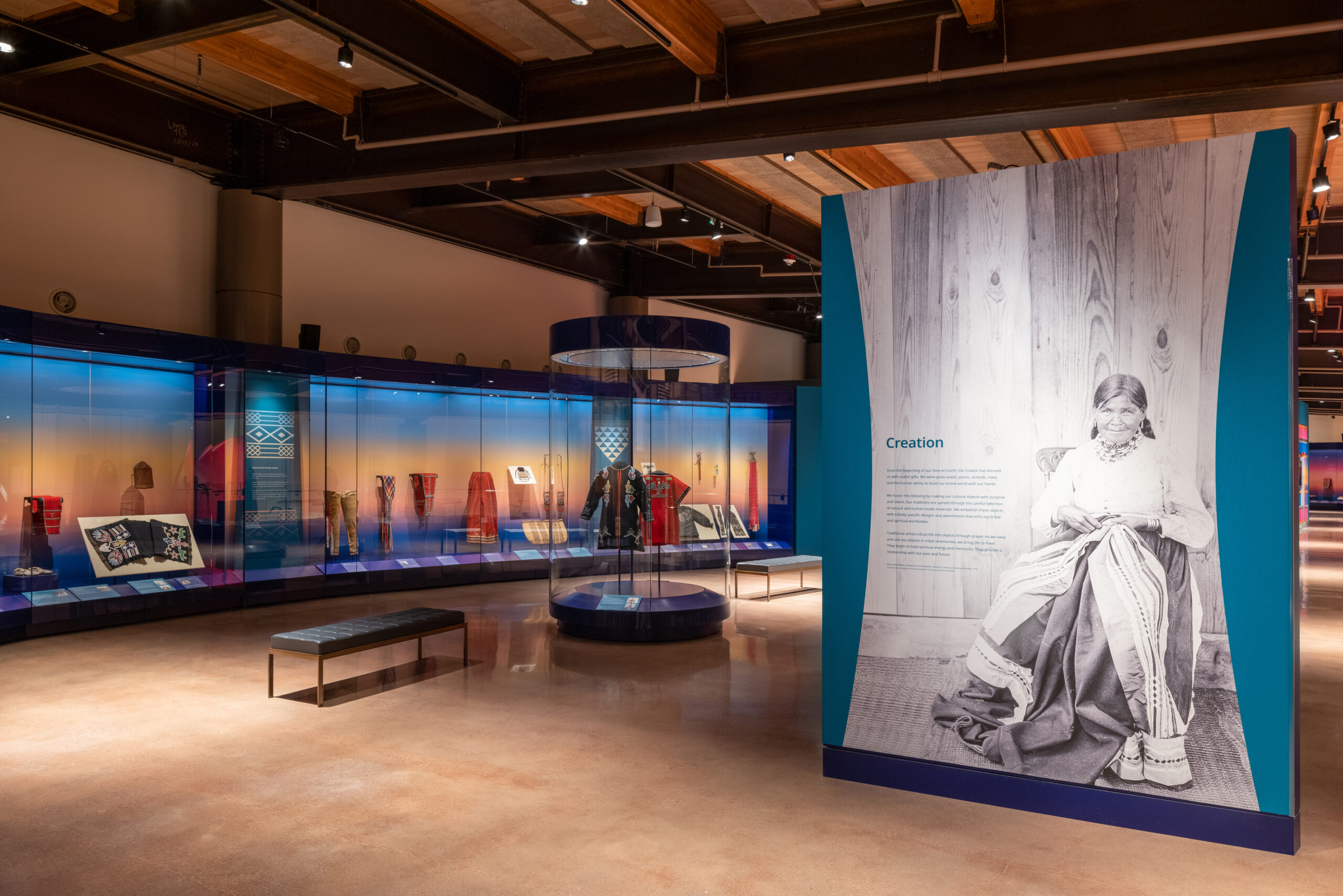
“Many of our rotating gallery areas had a series of tracks to allow illumination of fixed and portable walls,” says Stepniewski. “High-CRI lighting was used throughout.” Integral LED wash and accent lighting filtered for UV protection were used on exhibit walls and in circular displays. Adjustable accents and recessed, black-cylinder downlights hidden within slatted ceilings highlight sculptures. In breakout areas, 2700K surface and pendant-mounted cylinders combine with track lights to provide both general and accent lighting. Finally, recessed architectural downlighting provides low-level illumination in interactive exhibit spaces, while warm white light and RGBW lighting was implemented in the FAMily Discovery Center “to create an interactive learning environment for children,” says Stepniewski.
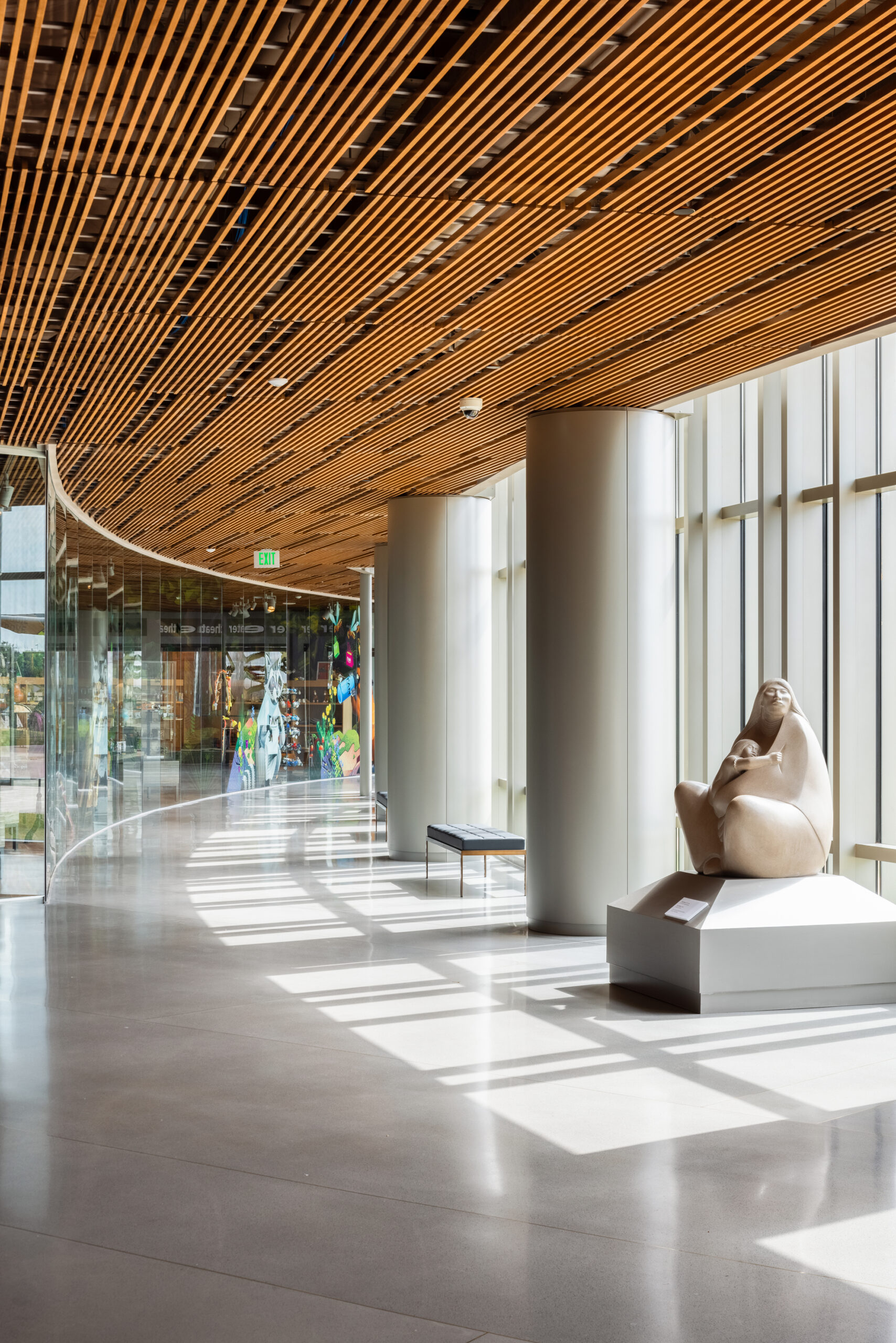
In order to achieve the required flexibility needed for the multifaceted interior, advanced lighting controls above the code-mandated requirements were used throughout the project. Both LDA and DavidWeiner Design used integrated controls in each of their scopes, and DMX controls were selected for use in the dynamic Discovery Center.
THE DESIGNERS
- Chip Israel, Fellow IALD, LC, LEED AP, Fellow IES, past president IES, is co-CEO and founder of Lighting Design Alliance.
- Alex Stepniewski is a lighting designer with Lighting Design Alliance.
- David Weiner is founder of David Weiner Design.
- Jesse Rathod was formally a lighting designer with Lighting Design Alliance.
